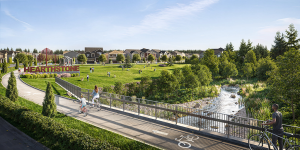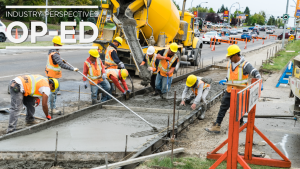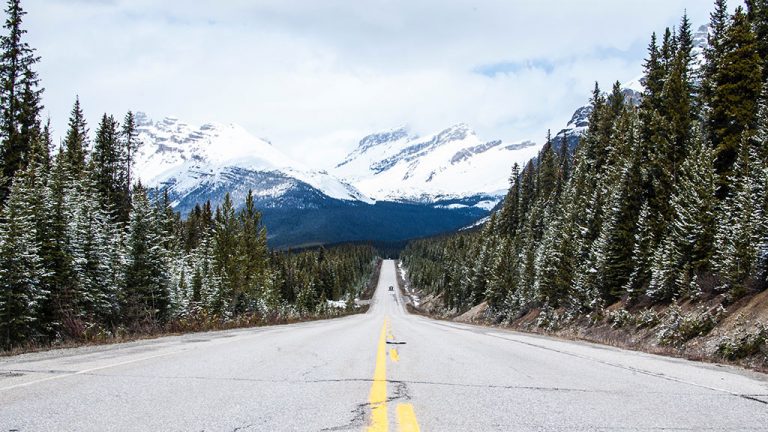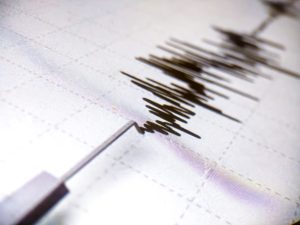With wildfire season in full swing and smoke drifting across most of Western Canada, the construction industry faces a new threat. In this, the first of a two-part series, we look at the steps construction employers and workers can take to mitigate health risks caused by wildfire smoke. Tomorrow, we examine what employers and workers can do to prepare and protect their sites.
Summer is the peak period for construction work in most parts of Western Canada.
It’s also the time when those who spend much of their workday outside are under threat from wildfire smoke.
FireSmoke reports there are approximately 170 wildfires across Canada, the bulk of them in B.C., Alberta, Saskatchewan and Manitoba, with particulate matter spread across the country.
The smoke from the wildfires is carried by the wind and often reaches construction sites where it can impact the health of workers.
Erin Linde, director, health and safety services at the British Columbia Construction Safety Alliance (BCCSA), says construction employers need to prepare in advance of the threat because wildfires are now commonplace.
“With wildfire smoke, it’s hard because it just shows up. We know in the summers now we have wildfires. But at this point, employers should just assume it’s going to happen every summer.”
Wildfire smoke is dangerous for everybody who works outdoors but construction workers are especially at risk because they are often doing physical work and breathing in particles, explains Linde.
“Wildfire smoke is an irritant because it causes people to cough and contributes to other respiratory effects. They feel it as sore throats, wheezing, headaches. People with allergies are going to feel it a lot more.
“Construction workers are usually doing heavy work like labour and so they’re going to breathe heavy and are going to feel the effects even more.”
Wildfire smoke is dangerous because it’s a complex mixture of particulate matter, gases such as carbon monoxide and nitrogen oxides, and volatile organic compounds. Some of the particulate matter in the wildfire smoke is very minute and can reach deep into the lungs.
According to the BCCSA, breathing can become more difficult when there is wildfire smoke in the air. The smoke can irritate an individual’s respiratory system and cause other health effects.
“When you have some symptoms already, and then you breathe in wildfire smoke, it’s going to bring more severe symptoms and ill feelings from smoke inhalation,” says Linde. “And then the longer you are outside, that’s what can make it really bad and make people sick.” The smoke can cause pneumonia, heart palpitations, chest pain, coughing and shortness of breath.
Older workers and those who already have chronic conditions such as asthma, chronic obstructive pulmonary disease, heart disease and diabetes are most at risk.
Common symptoms such as irritation of the eyes, nose and throat, runny nose, headaches and worsening allergies, are often temporary and improve when the smoke clears. However, some people may experience more severe symptoms.
The risk of more severe symptoms increases with the level of smoke inhalation, longer duration of exposure, and the health status of the individual and personal characteristics such as age.
Employers and workers can take several precautions against the effects of wildfire smoke. They are outlined in a document titled Managing the Health Risks of Poor Air Quality During Wildfire Season.
For starters, to lessen the double whammy of heat and wildfire smoke, Linde recommends construction workers begin their jobs earlier in the day so they finish earlier.
She also suggests employers and workers keep a close eye on the air quality health index for their region.
The BCCSA advises workers in high-risk groups to limit strenuous outdoor activities when the air quality index is between four and six and avoid activity altogether when the index is seven or higher.
Another option during periods of poor air quality is to have workers wear air-purifying respirators. Linde says it is the employer’s responsibility to ensure respirators are available and fit-tested and that construction workers are properly trained in how to use the equipment.
N95s and half-mask respirators fitted with P100 filters will reduce the amount of fine particulate inhaled by workers, the BCCSA notes. Half-mask respirators fitted with an organic vapour cartridge/P100 filter will protect against the particulate and organic vapours in the smoke.
When using respirators, Linde advises workers must be clean shaven so there is a proper seal.
Meanwhile, the BCCSA states employers should also provide indoor areas and clean-air refuge zones and, when possible, air filters rated at MERV 13 or higher should be used on ventilation systems.
When it is not possible to filter the air entering the building, the BCCSA advises portable HEPA air cleaners be used to remove wildfire smoke from indoor environments.
Air cleaners are also effective at reducing viral particles in the air and can reduce the risk of communicable disease transmission in indoor environments, the BCCSA states. Ozone-generating air cleaners should not be used because they release ozone gas, a respiratory irritant.











Recent Comments
comments for this post are closed